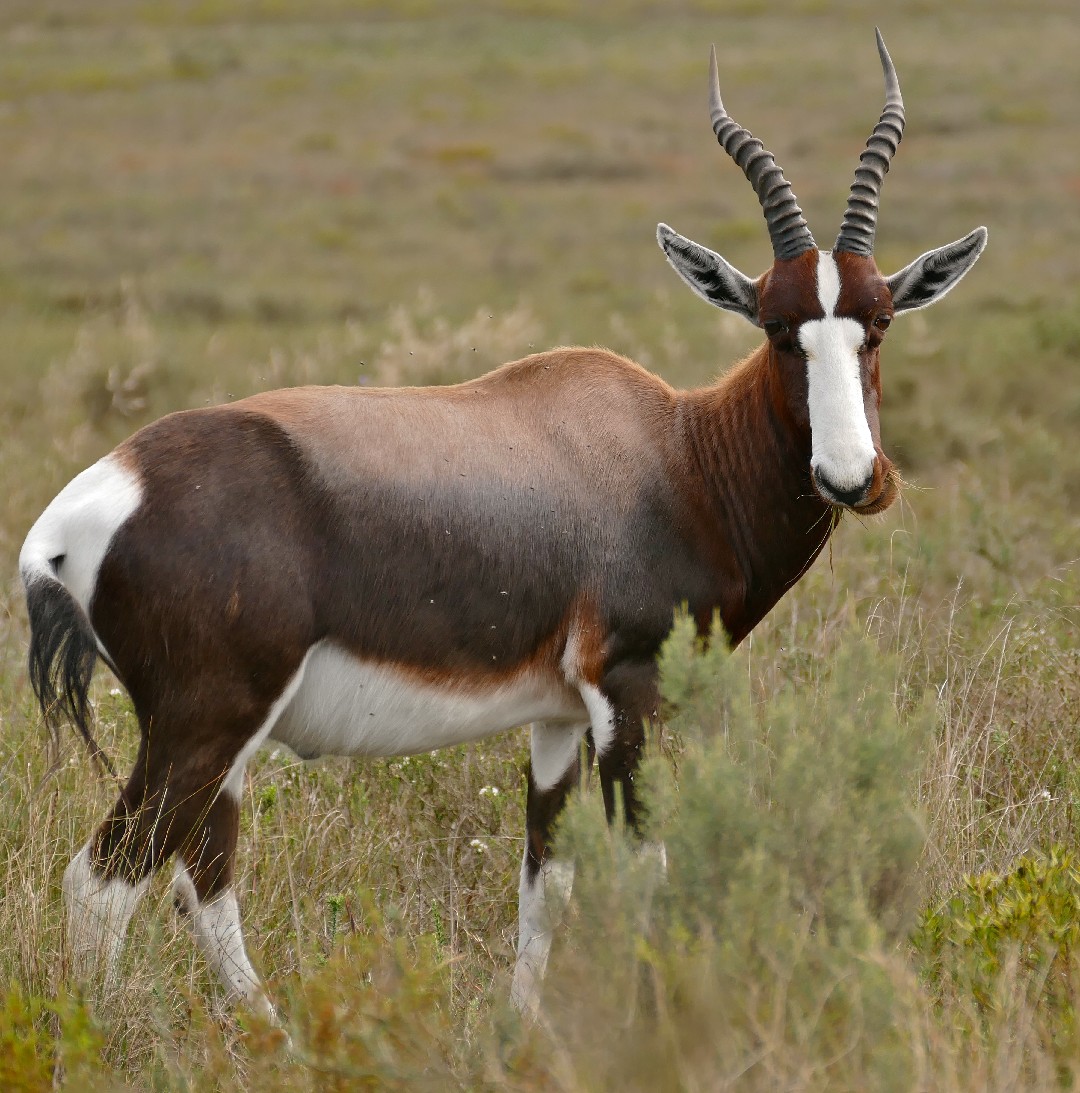Bontebok
A species of Tsessebes Scientific name : Damaliscus pygargus pygargus Genus : Tsessebes
Bontebok, A species of Tsessebes
Scientific name: Damaliscus pygargus pygargus
Genus: Tsessebes
Content
Description General Info
 Photo By Bernard DUPONT , used under CC-BY-SA-2.0 /Cropped and compressed from original
Photo By Bernard DUPONT , used under CC-BY-SA-2.0 /Cropped and compressed from original Description
Bontebok is a compelling species whose grazing strategy greatly impacts grassland ecosystems. Its selective feeding behavior encourages plant diversity by curtailing the dominance of few grass species. Interestingly, this species displays gregariousness, moving in large herds, which is an efficient anti-predation strategy. Thus, bontebok is integral both to the maintenance of plant diversity and the structure of terrestrial food chains.
General Info
Lifespan
20-25 years
Diet
Bontebok is predominantly a grazer, with a diet mainly comprising of grasses. It selectively feeds on palatable, high-quality grasses, while occasionally consuming herbaceous plants during sparse grazing conditions.
Appearance
Bontebok is a medium-sized antelope, boasting a streamlined body covered in short, sleek fur. Its dominant body colour is tawny-brown, with a white underbelly and rump. This animal is notable for its lyre-shaped horns, found in both sexes, but more pronounced in males. As bontebok age, their coats darken, and males can almost appear black in their later years.
Behavior
Bontebok is a notably social species, forming large, mixed-sex herds. Females, juveniles, and non-dominant males group around dominant male territories, marked with dung middens. Foraging in open areas during the day, they are especially active near dawn and dusk.